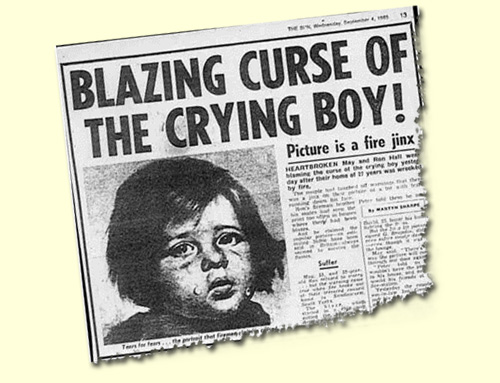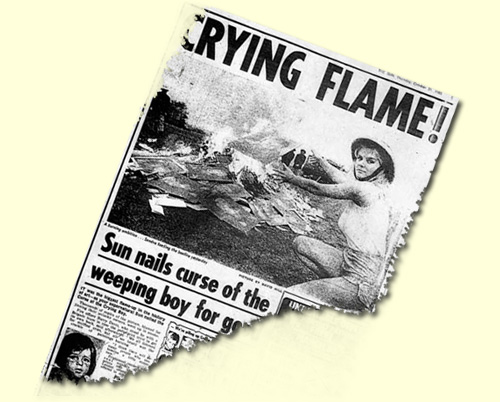Tue 2 Jun 2015
Off Yer Trolley
Posted by anaglyph under Australiana, Ephemera, Grumpy Old Man, Idiots, Philosophy, Stupidity
[46] Comments
I have come to believe that the whole scope of what’s wrong with the human condition can be represented by the microcosm of shopping trolley behaviour. What insights into the baser human instincts can be glimpsed by the observation of how people interact with their metal transport baskets! Here are some variations for you to consider:*
[Advisory – Trolley Trolls, as far as I’ve been able to observe, are equally represented by both sexes. I have alternated the sexes in the following examples, and nothing should be read into whatever gender happens to be associated with any particular category]
The Dumper:
The Dumper has no feeling of obligation to anyone. Once The Dumper has finished with his trolley, he abandons it right at the place where the last grocery item has been removed. This is probably in the last available parking space in the supermarket parking lot, or behind your already-parked car. Does he care that you’ll need to move his trolley in order to be able to go about your business? No he does not – that’s your problem pal.
The Pig Pen:
The Pig Pen thinks her shopping trolley is a mobile trash receptacle, and abandons it along with discarded items including – but not limited to – empty crisp packets, squashed muffins, spilled McThickShakes, soiled baby nappies, empty Coke bottles, used tissues, unwanted vouchers and fliers, and half-full cups of coffee. In some cases, three or more of the above at the same time.
The Fuck You:
The Fuck You takes the trouble to return his trolley to the trolley bay, but backs it in, linking his chain to the next trolley, but making it impossible for you to attach your chain and thus retrieve your coin. This person is probably a politician.
The Fuck You and the Horse You Rode In On:
The FYATHYRIO can’t be bothered to walk all the way to the end of the trolley bay, so attaches the trolley to the chain in order to retrieve her coin but leaves the trolley outside the bay, in such a way that it protrudes into the pedestrian walkway or the traffic transit lanes.
The Plague Vector:
As soon as your hands touch the trolley handle and feel the clammy dampness of bodily fluids, you know he’s been there.
The Rally Driver:
You never see the Rally Driver in action, just the long deep scratch down the side of the line of cars on the way to her destination.
The Magellan: You live half a kilometer away from any supermarket, but there it is: a trolley abandoned in your driveway. The Magellan plainly does not have a car – hey, I’m fine with that. BUT WHY IS THE TROLLEY IN MY YARD? Why is he not doing what a sane person would do, and keeping the trolley in his own yard to wheel back to the supermarket on the next trip? ((I’ll tell you why – because he is a fuckwit, and once he abandons the trolley it’s not his problem. He can always pick up another one next time.))
The Jammer: The Jammer takes the IKEA trolley back to the Woolworths bay, and despite the fact that the IKEA trolley is a completely different shape and size to the Woolworth’s model, jams it right in there, preventing any other person from docking their trolley. Thanks jerk. ((And seriously. Shopping stores: WHY DO WE NEED DIFFERENT SIZE TROLLEYS IN THE FIRST PLACE??? For fuck’s sake. Just adopt the same fucking standard as everyone else you cretins.))
The Choker: The Choker takes her trolley almost all the way back the trolley bay, but inexplicably abandons it about three paces away. That last little effort is just… so difficult. It’s evidently the ‘near enough is good enough’ philosophy.
The Utter Bastard: The Utter Bastard removes his trolley from the bay and then, inexplicably in terms of anything rational any sane person on the planet may consider, squashes chewing gum in the coin slot of the next available trolley, preventing any further trolleys from being used. I mean, WTF? Really, WTF?
The Complete and Utter Fucking Shithead Bastard: The CUFSB finds your trolley unattended in a quiet aisle (while you’ve gone off trying to find out why polenta isn’t in any sensible place you care to look) and attaches another trolley to it in order to steal your coin. This is a minor inconvenience if you have another coin, but if you don’t it’s a right royal pain in the ass.
*Lest you think I’m having a bit of a leg pull with all this, let me assure you that I’ve personally encountered every single one of these at some stage or another. It probably doesn’t need to be said, but you never actually see anyone carrying out these acts of despicable ratbaggery – indisputably because they know they’d be up for a public flogging if they were caught in the act.
















